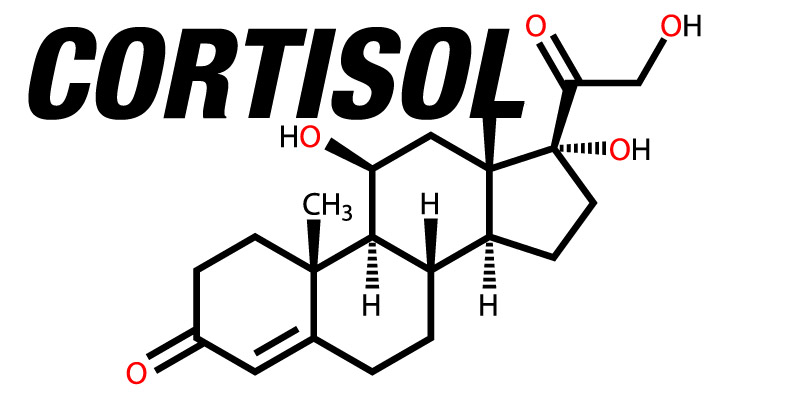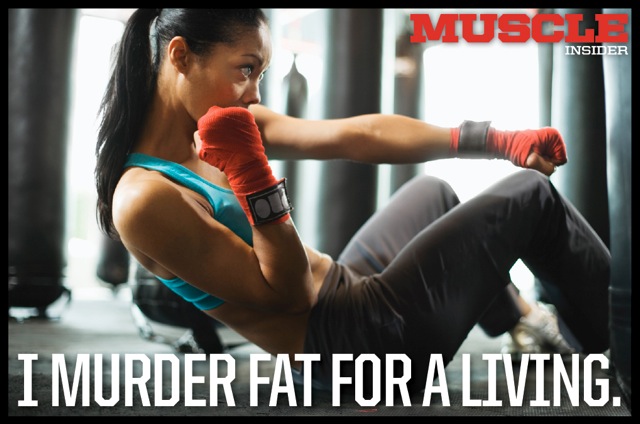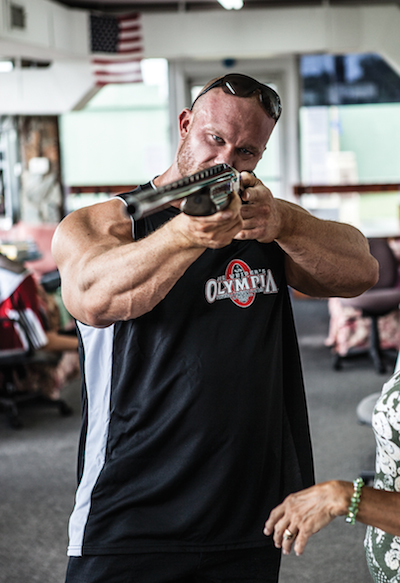Cortisol - PURE EVIL OR NECESSARY EVIL

Cortisol: PURE EVIL OR NECESSARY EVIL
There has been a resurgence of cortisol fear-mongering of late. And as usual, it’s being spewed from the mouth of the “45-minute workout guy” wearing obnoxious neon shoes that match his obnoxious neon shirt, spending all 45 minutes of his “hormonally superior” workout in front of the rack supersetting bicep curls with dumbbell shrugs while he spends his rest periods filling your head with pseudoscience he ascertained from reading three abstracts on PubMed. This lofty intellect will spit useless rhetoric while displaying a very vague knowledge of the body’s endocrine system in attempts to convert anyone in earshot to his gain-saving/time-saving workout, liberating bystanders from the evil that is cortisol.
What is cortisol?
Cortisol is what’s known as a glucocorticoid, which is a subclass of a steroid hormone released by the adrenal glands. Now before you go calling “your guy” and asking if he’s got any 10 mLs of cortisol lying around, you should know that cortisol is a catabolic hormone and its release is predicated by the release of precursor hormones within the brain. This cascade of events is a natural and daily process, which is necessary to help the body cope with stress. Its physiological actions include
• increasing blood glucose levels
• inhibiting protein synthesis
• breaking down peripheral fat
• storing visceral fat
• breaking down glycogen (glycogenolysis)
• breaking down bone
As mentioned above, the vast majority of cortisol’s physiologic effects are categorized as catabolic, which means that they break down. This breakdown of glycogen, amino acids, bone, what have you, is to ensure that a stressed body has adequate energy sources in order to survive.

Stress of a life…
Cortisol becomes problematic when it’s a long-term adaptation to stress, usually psychological in nature. For example, if you’re a father of seven with number eight on the way, all to different mothers, with different lawyers, with different child-support checks, then you’re much more likely to reap the damning physiological effects of cortisol when it comes to decreased digestion, immune system suppression, and the vilest, a decrease in favorable body composition … at least until that last kid turns 18.
But there is a difference between the stress of a life and the stress of a lift…
Stress of a lift…
The acute stress caused by a workout will undoubtedly trigger a cortisol release, and most research shows that this stress adaptation from resistance training occurs around the 45-minute to one-hour mark—hence why you’re going to hear many preachy gurus selling you on the “45-minute workout.” Exercise-induced cortisol is an expected adaptation to the body’s physiologic and metabolic stress, but, unlike the stress of life, the stress of a lift comes with more than just a cortisol release.

This is a fact that is often forgotten: Prolonged stress of a workout brings with it a release of anabolic hormones as well. Research actually shows that a high-volume training protocol that induces the highest amounts of cortisol sees the highest increase in muscle mass.
Wait. What? I thought cortisol was catabolic!
This is a classic example of direct correlation, not direct causation. Cortisol is still an evil catabolic hormone, but it’s a necessary evil when it’s brought on acutely due to resistance training. The targeted breakdown of muscle tissue needs to be facilitated in order to force the effected tissue to adapt, repair, and remodel via the associated anabolic hormones, testosterone, growth hormone and IGF-1.
OVERTRAINING
If you’re cutting your workouts short because someone has sold you on this idea of “overtraining,” then you’re not even close to overtraining.
The people who should be worried about overtraining are the world’s best athletes, but their dedication to their craft will never allow them to admit it. They eat right, sleep right, warm up often, and cool down always.
Consider these athletes the next time you ask yourself “Am I overtraining?”
• The most decorated Olympian of all time (22 medals), Michael Phelps, trains in the pool five to six hours a day, six days a week, covering at least 50 miles a week, plus an additional three weight-training sessions a week.
• Tom “The Quadfather” Platz trained quads for three to four hours a session with some sets of squats lasting 10 minutes alone.
• Mike Tyson trained seven days a week—often four sessions a day— and would have fulfilled the criteria for overtraining before most people had breakfast.
Phelps wanted to be the best swimmer, so he swam longer. Platz wanted the biggest legs, so he squatted more. Tyson wanted to be the champ, so he ran, skipped, sparred, biked, and lifted more.
So if you want to be the best mediocre, lazy-ass out there, then by all means, adhere to your cortisol-sparing 45-minute workout.
DON’T MANAGE CORTISOL, MANAGE STRESS

The take-home from all of this is that the acute stress and cortisol release of a workout is tangential to the bigger picture of stress management as a whole. Identifying and controlling your daily stressors is paramount when looking to improving quality of life and optimizing body composition.
Take a nap, start knitting, read a book, or, in this case, work out for as long as you damn well please. As long as you’re making an effort to reduce the stress of your life, then you’re on the right track.

